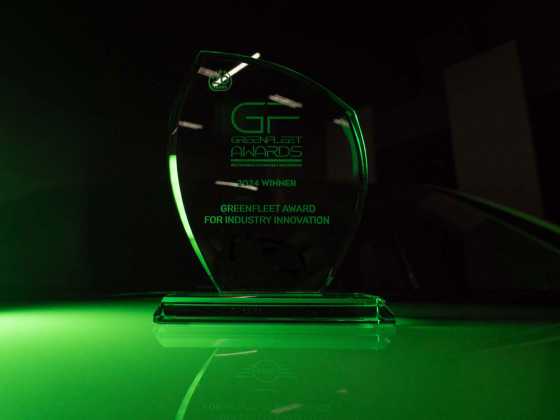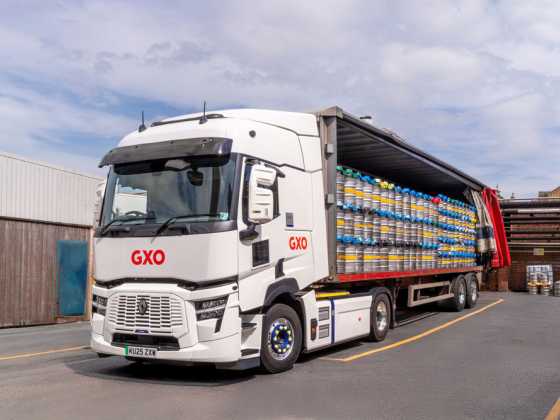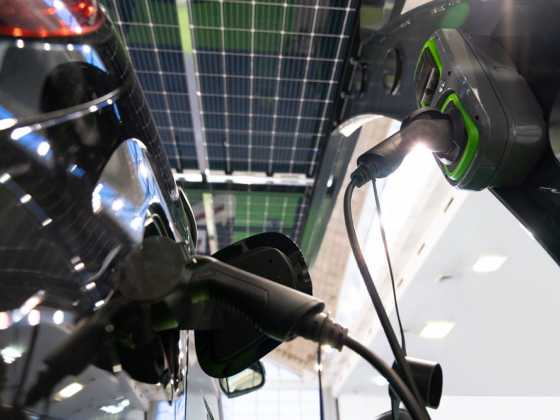Stimulating the stagnant electric truck market

Around 80 per cent of UK freight is moved on the road, mostly using HGVs, which create substantial carbon emissions. But stagnating demand for electric HGVs threatens to slow decarbonisation in this area. So what is being done to stimulate demand? GREENFLEET investigates
Heavy goods vehicles (HGVs) made up 20 per cent of the UK’s domestic transport greenhouse gas (GHG) emissions in 2021, making decarbonising the HGV industry crucial should the UK wish to reach its goal of net zero emissions by 2050.
However, in 2024, demand for zero emission HGVs fell by -7.3 per cent to just 213 units, which makes up a 0.5 per cent market share. This is the same as 2023, meaning demand hasn’t matched ramped-up efforts to push the UK into electrifying their HGVs.
These are worrying statistics for a country that has declared it will end the sale of all new, non-zero emission HGVs weighing up to 26 tonnes in 2035, as they made up 75 per cent of the market last year. Over the next decade, uptake will need to grow exponentially, warns the SMMT, should this ambition, and the wider 2050 net zero target, wish to happen.
In tandem with stagnating demand, charging infrastructure dedicated to electric HGVs is also low. Mass adoption of zero emission trucks, then, hinges upon their charging needs being met, as well as a choice electric trucks that are fit for purpose.
Given the time crunch as 2035-2040 looms near, action must accelerate.
Positive progress
All this isn’t necessary a marker of poor progress in decarbonising HGVs. In fact, it is not a true reflection of the massive efforts manufacturers, fleet managers and policymakers, are making to ensure the UK is ready to exclusively sell zero emission HGVs by 2040.
The good news is that the government has extended its grant for low emission trucks, for another year – until 31 March 2026. This should help to encourage buyers to make the switch towards low carbon trucks, with the grant offering up to £25,000 off an eligible vehicle.
Trucks between 4,250kg and 12,000kg qualify for the small truck grant, providing they have CO2 emissions at least 50 per cent below the equivalent conventional Euro VI vehicle (that can carry the same capacity). They must also be able to travel at least 60 miles with no emissions. The grant pays for 20 per cent of the purchase up to a maximum of £16,000.
The grant for large trucks is up to £25,000. To be eligible for a grant, the vehicle must be heavier than 12,000kg, have CO2 emissions of at least 50 per cent less than the equivalent conventional Euro VI vehicle (that can carry the same capacity), and be able to travel at least 60 miles without any emissions.
Substantial roll outs
Despite stagnating overall figures for electric HGVs, there are a number of companies making the switch to electric trucks.
At the start of this year, Amazon placed its largest-ever order of eHGVs, and announced it will be using the UK’s electric rail networks to transport packages. Over the coming 18 months, more than 140 electric Mercedes-Benz Truck eActros 600 truck and eight Volvo FM Battery Electric trucks will join Amazon’s transportation network.
Alongside the new vehicles, the company will supply fast charging infrastructure across key UK sites, including 360kW electric charging points capable of charging the 40-tonne Mercedes-Benz Truck eActros 600 trucks from 20 to 80 per cent in just over an hour.
On full charge, the new electric trucks will be able to travel 310 miles, key for long-haul freight vehicles.
Around 20 of the Mercedes-Benz trucks will join Amazon’s transportation network following the company’s participation in the UK government’s Zero Emission HGV and Infrastructure Demonstrator programme (ZEHID), with a proportion funded by the Department for Transport and coordinated in partnership with Innovate UK. Amazon also added eight additional Volvo FM Battery Electric trucks as part of the programme.
Delivery company HIVED has recently ordered 11 Mercedes-Benz eActros electric trucks to its fleet, specifically nine eActros 600 and two eActros 400 models. These vehicles will operate across its nationwide middle-mile network, collecting from retailer warehouses for delivery to end customers.
HIVED has plans to install megawatt chargers in the next year at its hubs in East and West Lonon, the Midlands, and Manchester.
B&Q is another big name adopting electric vehicles. In November 2024, B&Q added two electric delivery trucks to its fleet, with a third to arrive in early 2025. Integrated into B&Q’s home delivery fleet, there are plans to add smaller electric vans for more local deliveries in the new year. These vehicles are set to play a “significant role” in B&Q’s commitment to reducing emissions and using alternative energy sources, with the trucks set to make 12 to 14 deliveries each day.
Parcel delivery company DPD has announced it is conducting electric HGV road trials with MAN, with the aim of introducing heavy-duty electric trucks later this year. DPD is running road trials with the MAN eTGX which will be based at DPD’s Hinckley hub where, following a full induction and driver training, it will be assigned to a DPD route for operational testing, towing a standard trailer.
The transition to electric trucks presents an additional challenge, as DPD has operated double-decker trailers for many years, which reduce the number of vehicles on the road by increasing parcel capacity and reducing the accompanying emissions. DPD is working with MAN to develop a configuration capable of pulling double- decker trailers and the first vehicle with that spec will be on test with DPD later this year.
Trials and research
There are a number of trials and research projects taking part in the UK right now, paving way for the mass adoption of electric trucks.
The eFREIGHT 2030 consortium, for example, is one of the programmes under the government’s Zero Emission HGV and Infrastructure Demonstrator Programme. Allocated £49.2 million, the programme brings together leading logistics providers, high street names, and hauliers to conduct a multi-year real world evaluation of electric HGVs that will pave the way for zero emission transport.
eFreight 2030 will help unlock an expected £500 million of private investment from consortium members in electric vehicles and charging hubs across the UK by 2030. The eFREIGHT 2030 consortium is introducing 100 electric HGV 4×2 and 6×2 tractor units, and 32 new charging locations with megawatt-charging capacity from day one.
Having started in early 2040, the project launched its first electric HGV in October 2024 through a collaboration with Welch’s Transport. Another initiative aiming to provide the charging infrastructure for electric trucks, as well as prove and accelerate their use, is the Electric Freightway Project from GRIDSERVE and Hitatchi ZeroCarbon. Its second progress report revealed that the consortium of more than 30 members have made good progress in the demonstration, design, and implementation of eHGV infrastructure.
A.F. Blakemore and Son, Samworth Brother Boughey, and United Utilities have all added eHGVs to their existing fleets, while other consortium partners have placed orders and await the delivery of their eHGVs.
Moreover, Hitachi ZeroCarbon has developed a comprehensive data analytics platform that will objectively compare the operational performance of diesel HGVs to eHGVs, offering insights that will speed up the journey to electrification for fleet handlers. The report shows that the project consortium has prioritised research and planning, including conducting interviews with senior managers and drivers of HGVs, to lay the groundwork for effective deployment of eHGVs.
GRIDSERVE, the consortium lead, following extensive consultations, has designed both depot-based and public high-power charging stations, making some of the first eHGV-specific proposals in the UK. The first sites are expected to be ready within the coming months, delivering the charging network necessary to provide for an eHGV fleet.
Project Jolt meanwhile sees a number of academics work with industry to establish whether electric road freight transport, and in particular 44 tonne electric trucks, can become commercially viable.
The recently launched consortium consists of 15 fleet operators, four truck manufacturers, several technology providers and two universities. The collaborative research exercise is answering the question “how can the move to net zero be derisked”.
The consortium is led by Professor David Cebon of the Centre for Sustainable Road Freight. The fleet operators are drawn from across the logistics industry and include John Lewis Partnership, Nestle, William Jackson Food Group, Welch Group, Howard Tenens and Knowles Logistics.
Speeding ahead
Despite stagnating demand for eHGVs in 2024, the push for zero emission trucks continues at pace, with leading companies taking the plunge and investing in electric trucks, academics and industry working together to iron out challenges, and the government offering financial incentives to make the switch.






